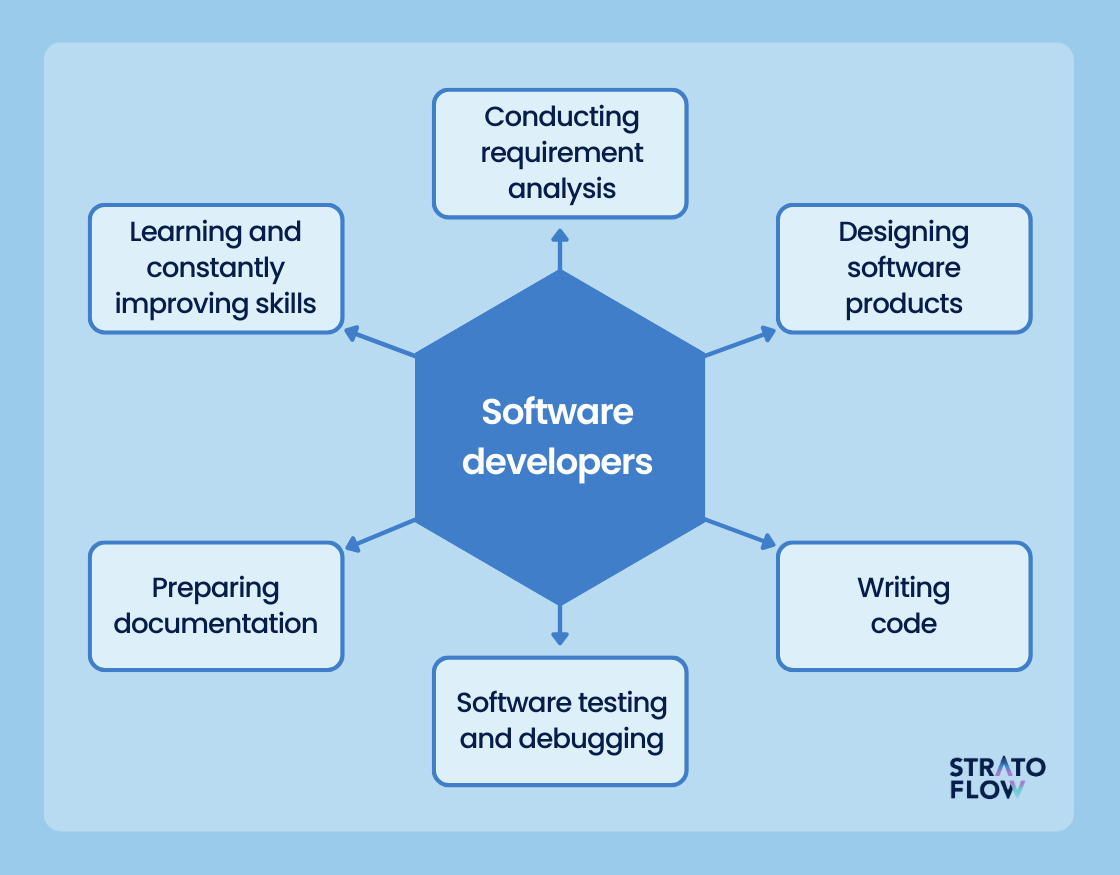Hire Dedicated Developers to Increase Your Software Development Timeline
Hire Dedicated Developers to Increase Your Software Development Timeline
Blog Article
Devoted Developers vs. In-House Teams: Which Is Right for You?
The decision between making use of specialized developers and preserving an in-house group is a considerable one that can influence the trajectory of your projects and overall company approach. Dedicated developers supply a degree of adaptability and customized expertise that can be advantageous for details, temporary campaigns. Conversely, in-house groups add to a natural business society and a nuanced understanding of long-term objectives. By checking out important aspects such as budget, task extent, and wanted control, you can much better figure out which technique aligns with your business demands. The ramifications of this selection extend beyond prompt end results-- take into consideration the broader influence on your service landscape.
Understanding Dedicated Designers
The expanding demand for specialized skills in the technology industry has actually caused the appearance of specialized programmers as a feasible option for lots of companies. These specialists are normally gotten on a task basis, allowing firms to utilize particular know-how without the long-lasting dedication associated with full-time hires. Devoted programmers are commonly ingrained within a customer's team, providing versatility and scalability to fulfill job needs.
This version permits companies to access a global skill swimming pool, which is particularly beneficial in a quickly progressing technological landscape. Devoted developers can be sourced from numerous geographical places, guaranteeing that firms can discover the best ability at competitive rates. They typically bring a riches of experience and understanding, having actually worked on varied projects throughout different markets.
Moreover, committed designers can concentrate exclusively on the jobs at hand, enhancing efficiency and efficiency. They are outfitted to integrate effortlessly right into existing process, teaming up closely with internal teams to accomplish job goals. This technique not only lowers the burden of recruitment and training however additionally enables organizations to continue to be dexterous, adjusting quickly to transforming market needs and technical improvements.
Benefits of In-House Teams

Furthermore, in-house teams tend to have a deeper understanding of the firm's mission, values, and goals. This placement can boost employee involvement and motivation, as staff member really feel more attached to their job and the company's success. Furthermore, having a committed internal group enables much better positioning of goals and approaches, as these members are consistently concentrated on the business's priorities.
In-house groups additionally facilitate quicker decision-making procedures, as they can respond extra quickly to obstacles and adjustments. The well established relationships and experience with company protocols permit streamlined workflows and lowered miscommunication. Inevitably, the combination of a natural society, positioning with organizational goals, and effective communication makes internal teams More Help a useful asset for numerous organizations, specifically those seeking to cultivate long-lasting development and development.
Expense Considerations
When evaluating expense factors to consider, both specialized developers and in-house teams present distinct financial ramifications for organizations. Engaging devoted designers typically includes a pay-per-project or hourly price design, which can be cost-effective for organizations with fluctuating project needs. This strategy permits versatility in scaling resources up or down, ensuring that companies just spend for the solutions they require.
In comparison, internal teams require repaired expenses, including incomes, benefits, and overhead costs such as workplace area and equipment. While this design provides better control and instant accessibility of resources, it may result in greater long-term expenditures, specifically if the workload does not validate a full-time staff.
Moreover, firms must consider the hidden expenses connected with employment and training of internal staff members, which can additionally stress budget plans. In some instances, the time and resources invested in taking care of an internal group can diminish the company's core service purposes.

Task Monitoring and Adaptability
Project management and versatility are essential variables that influence the choice between committed programmers and internal teams. Committed teams commonly have actually developed processes for managing jobs successfully, leveraging certain techniques like Agile or Scrum, which promote repetitive progression and adaptability.

Ultimately, the selection between devoted developers and in-house groups hinges on the desired degree of flexibility and the certain task management demands. Companies should assess their operational dynamics, project intricacy, and source schedule to establish which option lines up ideal with their strategic purposes.
Making the Right Option
Selecting the best growth approach-- devoted designers or in-house teams-- requires a cautious analysis of various elements that straighten with a company's critical objectives. Conversely, internal teams can give far better continuity and combination with existing personnel.
Following, assess your budget plan. Dedicated programmers typically provide a cost-effective solution for short-term jobs, while internal groups may incur higher lasting expenses as a result of incomes, advantages, and expenses prices. Examine the level of control and cooperation desired; in-house groups usually promote stronger communication and positioning with firm society.
Additionally, think about the time frame. If prompt outcomes are necessary, devoted developers can be onboarded rapidly, whereas developing an internal team takes some time for employment and training. Ultimately, consider the lasting vision of your company. Investing in an internal team may generate far better returns over time if constant check that development is vital. Eventually, the choice pivots on a comprehensive evaluation of these factors, guaranteeing alignment with your firm's overall goals and functional demands.
Final Thought
To conclude, the choice in between internal groups and dedicated programmers pivots on project demands and business purposes. Devoted designers offer versatility and specialized expertise, making them suitable for short-term initiatives. On the other hand, internal groups cultivate a cohesive culture and deeper placement with lasting objectives. Cautious assessment of budget plan restrictions, job timelines, and desired control degrees is crucial for figuring out one of the most ideal strategy, making sure positioning with strategic top priorities and functional efficiency.
The decision between using committed developers and maintaining an in-house team is a considerable one that can affect the trajectory of your projects and overall service method.Job management and adaptability are critical factors that affect the selection in between in-house groups and committed developers. dedicated development team.In contrast, internal teams may stand out in keeping a regular task management structure due to their knowledge with the organization's culture and long-term goals. Devoted designers usually provide an affordable option for temporary jobs, while in-house groups might incur higher lasting expenses due to incomes, benefits, and overhead costs.In conclusion, the decision between dedicated programmers and internal teams pivots on job needs and business purposes
Report this page